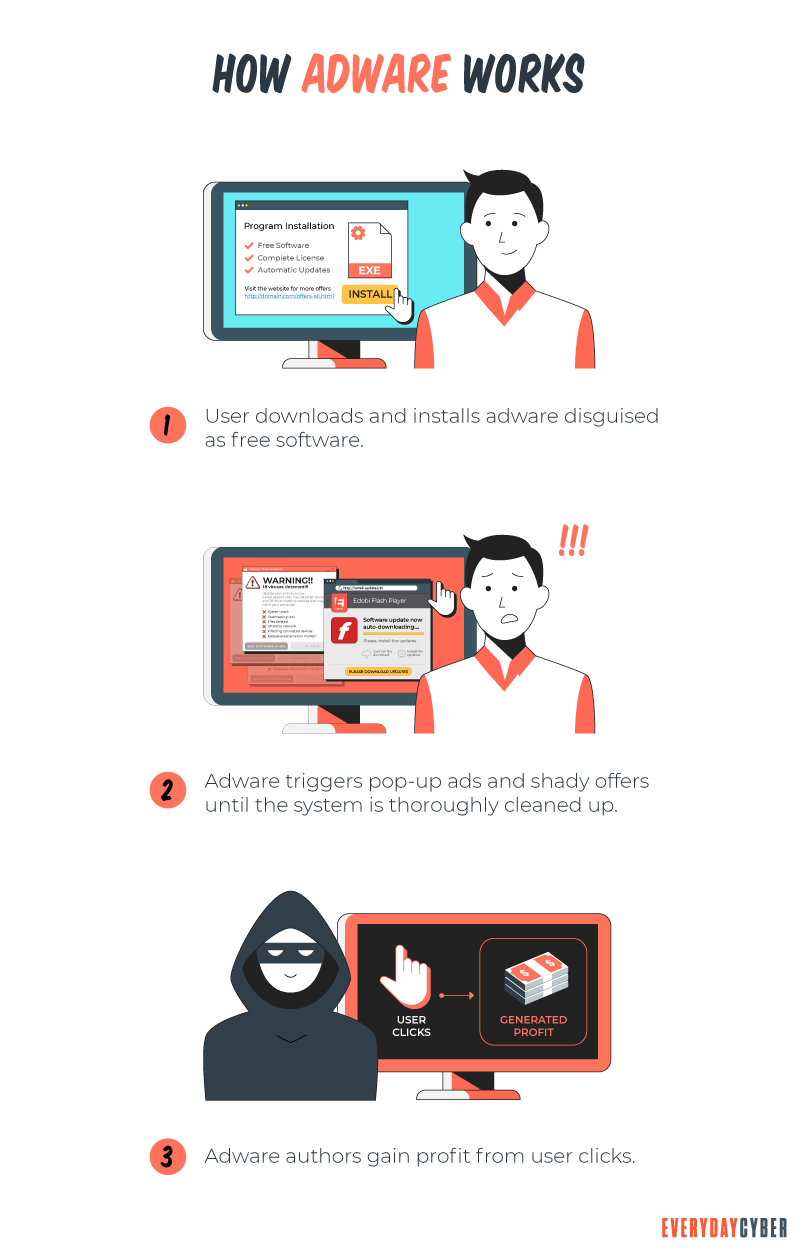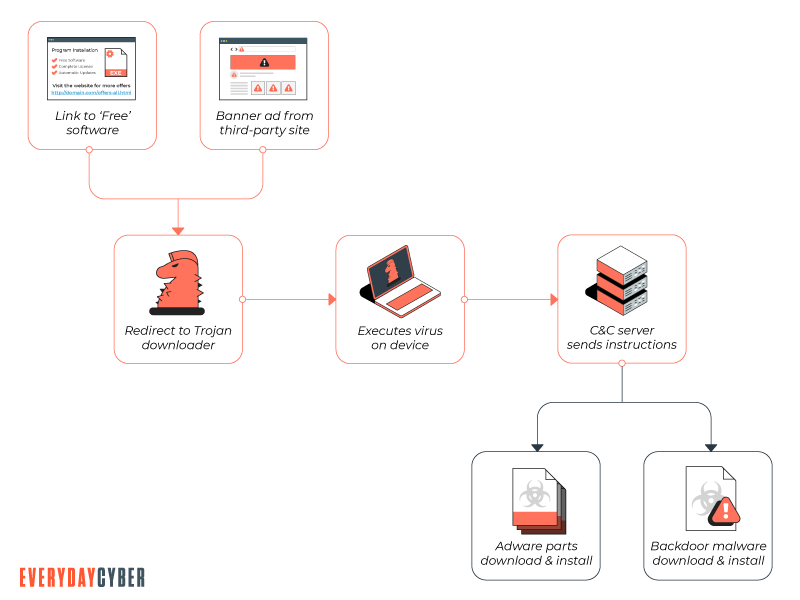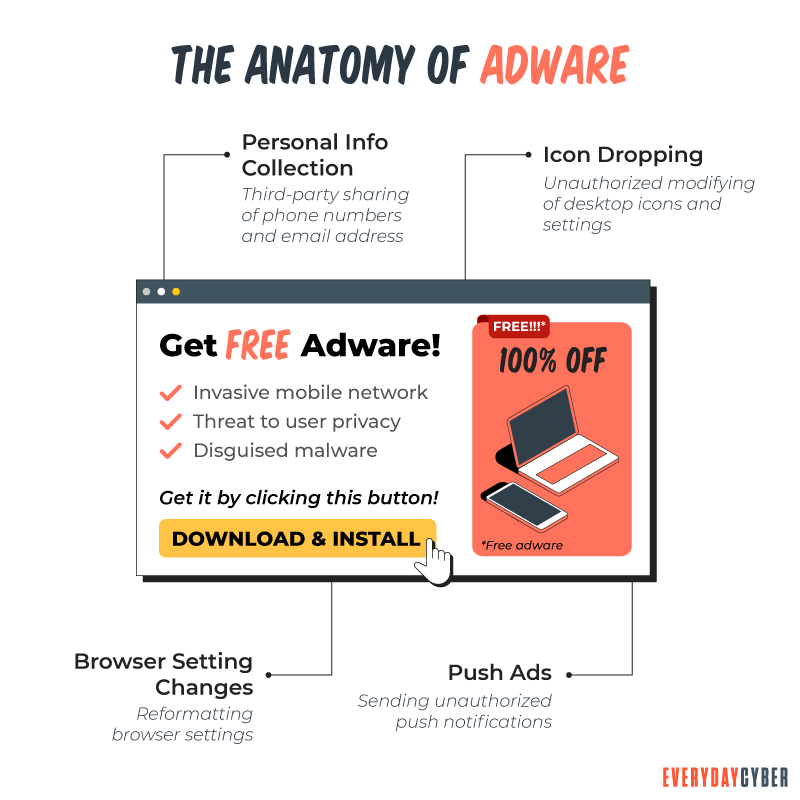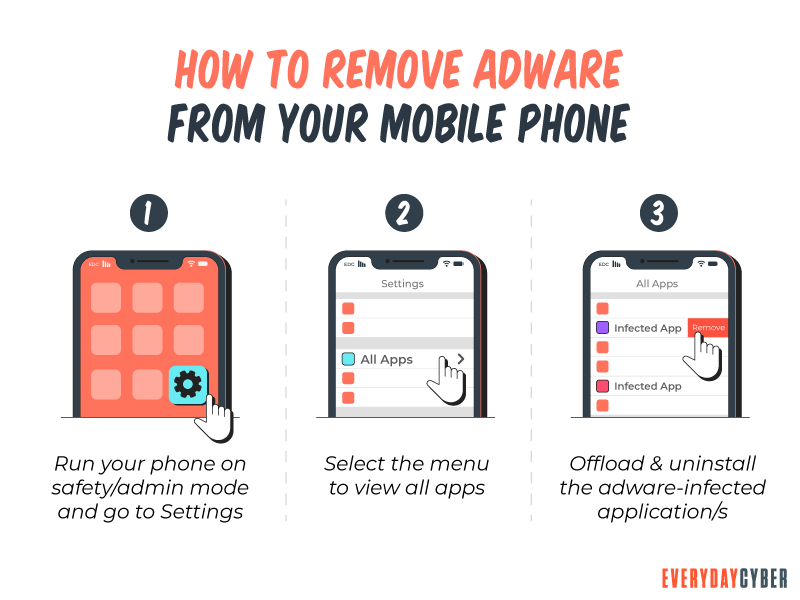Adware can be frustrating, and almost everyone recognizes it when they experience it. That’s because it is first and foremost ANNOYING!!!! Popups and website redirections to places showing advertisements you had no intention of looking at. Bombarding you with crap that you have no interest in seeing and taking control of your desktop or

Adware is not always destructive. In the best case it is just immensely annoying. But more often than not it can be horrible, compromising your
So what can Adware do?
The real threat of Adware goes far beyond just displaying pop-up ads, changing your browser’s homepage, or redirecting your web browser to unwanted websites full of advertisements. It can be a nuisance and a severe threat, but it sometimes appears to be less threatening than say a ransomware popup. But here is the rub, Adware is often the tool bad actors and cybercriminals use to lure you into downloading even more dangerous malware.
Some of the direct ways Adware can affect your devices include:
- Infinite popups – Endless annoying popup ads that you seemingly can’t get rid of
- Spying – while not fully spyware, it can track your online activities especially what you do it through your browser
- Kill your performance – drains your device’s processing power by constantly downloading and loading ads
- Man in the middle attacks – is a particularly bad scenario because it redirects all of your internet traffic through a nefarious server including such connections you use to financial institutions like banks. Which means they can monitor and steal from those communications.
- Cost you money from excessive data – downloading images and videos displayed in the ads can be costly to your data charges.
How does Adware get on my device?
There are generally 2 ways Adware can get on your devices.
- You download an app, usually one that is free – Shareware or freeware – that contains the Adware. It gets installed without your knowledge as part of the free software.
- From an website. Some websites can be infected with Adware, which exploit vulnerabilities in your web browser to cause a drive-by download, resulting in more Adware or more sinister malware infecting your device.

By entering your email address you agree to receive emails from EveryDayCyber. We'll respect your privacy and you can unsubscribe at any time.
How do I know I am infected?
The most obvious one is the constant, annoying popups. But there are other indicators.
- Your device starts to get slower and slower
- Your device starts to crash for no apparent reason
- Your homepage for your browser changes – from google search to an Adware site
- Your internet connection gets slower and slower
Is it illegal?
Based on the nasty effects of Adware, you may be wondering, “is Adware illegal?”. The answer unfortunately is nuanced. The actual display of ads is not and in fact many of the free software apps, particular those used on

How to protect your devices from Adware.
The best strategy is the same as with all of malware, combine good cyber
Good practices include:
- Keep your software and operating system up to date
- Resist the bad actors attempts to lure you in with their slick ads and intriguing offers
- Keep you eyes peeled. Be suspicious of all websites, watch for fake websites and forged emails
- Check twice, click once. Do not trust any link that you are not 100% sure is safe. Assume all links go to bad places before clicking – it will save you a bunch of heartache.
- Do not download any file you are not 100% sure is safe and trustworthy.
Installing a quality antivirus/antimalware tool is still the best defense from all types of malware, there are some additional steps that can be done to prevent Adware infection.
Blocking certain kinds of scripts from running in your browser can help, Adware is usually written with the same programming language used by legitimate websites and services. But disabling these scripts does mean disabling the web as you know it.

There are also specific techniques and tools for the most common devices. See below for links to the most popular devices.
How to remove Adware on your PC.
How to remove Adware on your MAC.
How to remove Adware on
How to remove Adware on IOS.
By entering your email address you agree to receive emails from EveryDayCyber. We'll respect your privacy and you can unsubscribe at any time.
Recommended Reading
What is a zero-day threat?
A zero day threat is a security flaw known or unknown to the software vendor which hasn't had a patch made to fix the vulnerability.
What is a Remote Access Trojan (RAT)?
A remote access Trojan is a software used by hackers to gain unauthorized access and remote control on a user’s computer or mobile device, including mouse and keyboard manipulation.
What to do if your email Is hacked
Identity theft and bank account or credit card fraud are both possible consequences of a stolen email. If you suspect that your email has been hacked, act quickly to limit the harm. Here are 9 steps to take back control of your email if you have been hacked.
What is Shoulder Surfing?
Shoulder surfing is a form of social engineering that enables cybercriminals to gather information just by looking over their victims’ shoulders. The aim of shoulder surfing is to obtain personal data, such as usernames, passwords or personal identification numbers (PINs), bank account numbers or credit card numbers.
12 Ways to Help Older Adults Stay Safe Online These Days
Seniors, like everyone else, have special vulnerabilities in addition to the common Internet risks. They have specific characteristics that make them vulnerable online, particularly to online fraud. Isolation and lockdowns caused by the pandemic have forced seniors to embrace technology like never before. Here are 12 ways to key seniors safe online.
What you should know about Chatbots And cybersecurity
Chatbots are conversational assistants that automate repetitive chores. We like them because they assist them in completing jobs swiftly and without the need for human interaction. But an unprotected chatbot can be a security problem. Hackers can use defenseless AI chatbots to carry out nefarious activities. Read to learn more.

